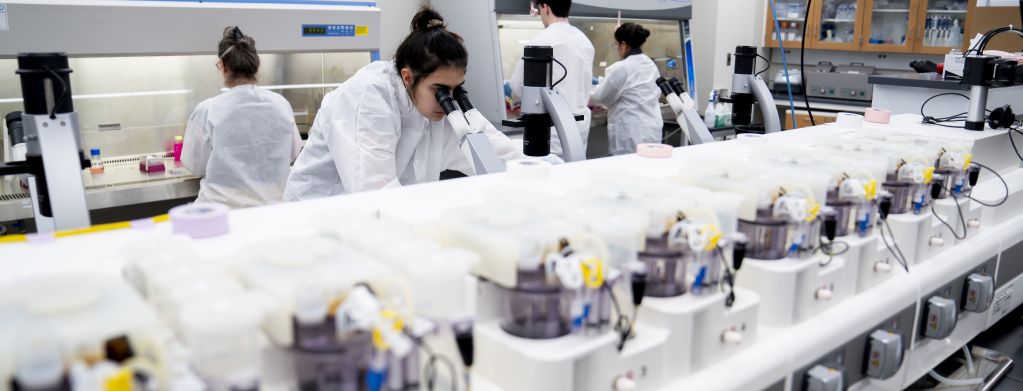
Cell therapies are transforming disease treatment and offering new hope to patients with limited options. However, their widespread application is constrained by significant production challenges. Manufacturing cells is extremely costly, and scaling production remains difficult with current cell culture technologies. Additionally, the cells produced often exhibit poor survival and function once administered in vivo.
Both industry and academia are working to overcome these barriers by developing larger bioreactors and optimizing cell culture and differentiation protocols. Yet, these evolutionary efforts bring only incremental improvements and fall short of fully addressing the production challenge. In contrast, The Advanced Cell Manufacturing and Therapies Program (ACT) aims to develop disruptive next-generation cell manufacturing and delivery technologies that can remove this roadblock entirely. Specifically,
- Rather than building larger bioreactors with low-density cell cultures, we aim to develop scalable microbioreactors that support cell densities over 100 times higher, enabling the production of large quantities of cells within miniaturized devices. This miniaturization significantly reduces labor, facility demands, and production time. More importantly, it opens the door to distributed manufacturing and even point-of-care production.
- Instead of refining costly differentiation protocols based on protein factors, we propose to develop a safe, precise, and inducible method using transcription factors. Eliminating protein factors dramatically cuts medium costs and enhances production consistency.
- Unlike the current approach of using produced cells as final products, we aim to develop innovative surface coating technologies that significantly improve cell survival and functionality in vivo.
ACT technologies are expected to enable cell production at unlimited scales, at just 10% of the current production cost, and with significantly improved vivo performance. The key distinctions between current research approaches and ACT’s vision are summarized in the table below.
| Current state-of-the-art (including NSF/NIH funded programs) | Next generation (our program) | |
|---|---|---|
| Cell culture protocols |
|
|
| Cell manufacturing system |
|
|
| Post-manufacturing functionalization |
|
|